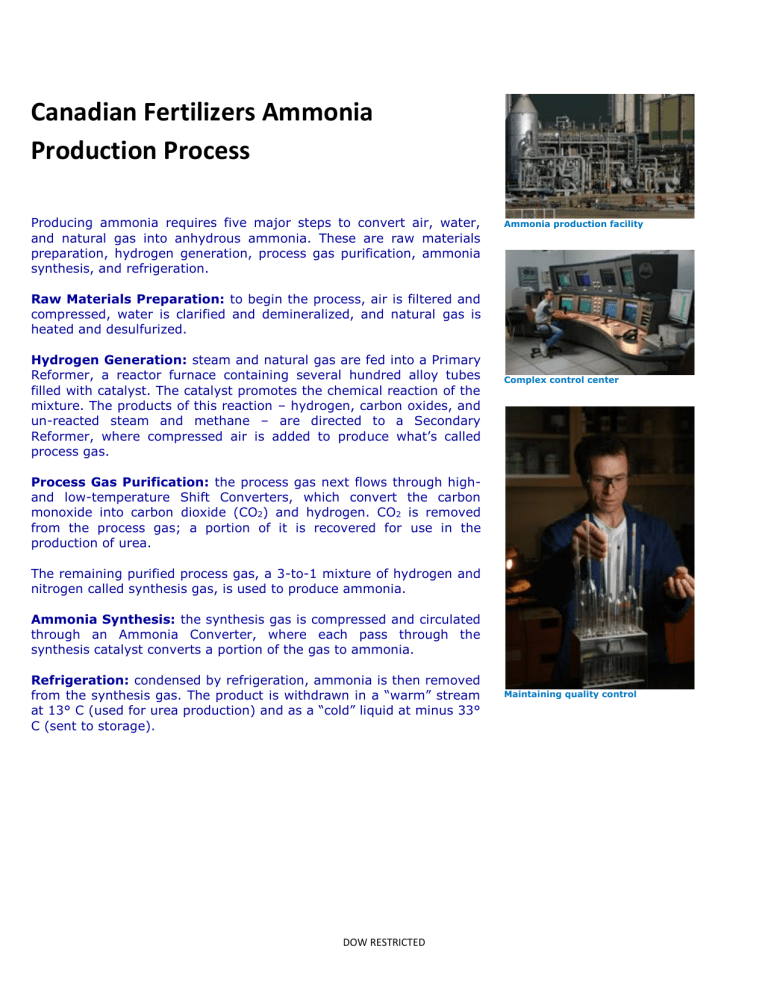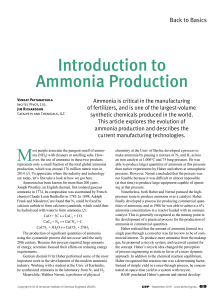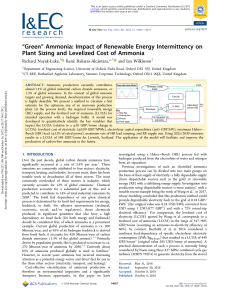
Canadian Fertilizers Ammonia Production Process Producing ammonia requires five major steps to convert air, water, and natural gas into anhydrous ammonia. These are raw materials preparation, hydrogen generation, process gas purification, ammonia synthesis, and refrigeration. Ammonia production facility Raw Materials Preparation: to begin the process, air is filtered and compressed, water is clarified and demineralized, and natural gas is heated and desulfurized. Hydrogen Generation: steam and natural gas are fed into a Primary Reformer, a reactor furnace containing several hundred alloy tubes filled with catalyst. The catalyst promotes the chemical reaction of the mixture. The products of this reaction – hydrogen, carbon oxides, and un-reacted steam and methane – are directed to a Secondary Reformer, where compressed air is added to produce what’s called process gas. Complex control center Process Gas Purification: the process gas next flows through highand low-temperature Shift Converters, which convert the carbon monoxide into carbon dioxide (CO2) and hydrogen. CO2 is removed from the process gas; a portion of it is recovered for use in the production of urea. The remaining purified process gas, a 3-to-1 mixture of hydrogen and nitrogen called synthesis gas, is used to produce ammonia. Ammonia Synthesis: the synthesis gas is compressed and circulated through an Ammonia Converter, where each pass through the synthesis catalyst converts a portion of the gas to ammonia. Refrigeration: condensed by refrigeration, ammonia is then removed from the synthesis gas. The product is withdrawn in a “warm” stream at 13° C (used for urea production) and as a “cold” liquid at minus 33° C (sent to storage). DOW RESTRICTED Maintaining quality control DOW RESTRICTED






